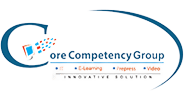Mastering Upskilling: A Comprehensive Guide for Businesses
Rohit Kumar
14 Jul, 2023

In the fast-paced business world, two significant challenges are staying ahead and ensuring your team has the necessary skills to excel. Upskilling, the process of enhancing existing skills or learning new ones, offers a powerful solution to these challenges.
By investing in continuous employee development, organizations can tap into their workforce's latent potential, cultivate a learning culture, and drive business results. However, you need the right tools and knowledge to execute an effective upskilling strategy to achieve this. This article will illuminate the key aspects of upskilling, including its definition, benefits, how it differs from reskilling, and best practices.
Upskilling is developing new skills or refining existing knowledge to keep pace with the ever-changing workplace. Successful upskilling of employees typically involves continuous learning and development initiatives that equip staff with the technical and soft skills needed to adapt to changing industry demands.
Contrary to popular belief, upskilling and reskilling are not the same. Reskilling involves learning new skills to transition into a different role or field, preparing employees for a different career path. On the other hand, upskilling enhances employees' current skills or develops new ones relevant to the same role or field. Therefore, upskilling expands and deepens employees' knowledge to keep up with evolving job requirements within their current career path.
Upskilling examples
- A software developer undertaking cloud computing training to improve their design skills and build better applications
- A graphic designer taking UX/UI design training to broaden their expertise and ability to create user-friendly interfaces
- A customer service representative undergoing communication training to enhance interpersonal skills and collaboration abilities
- A civil engineer training in Building Information Modeling (BIM) software to improve their project coordination abilities and efficiency
- A registered nurse obtaining an advanced cardiac life support (ACLS) certification to enhance their skills in emergency care
Reskilling examples
- An accountant undertaking data analytics training to retrain as a data analyst
- A sales manager taking PMI training to transition to a new role as a project manager
- A chef taking courses in food science to become a nutritionist
- A journalist acquiring knowledge of SEO optimization and best practices to retrain as an SEO writer
- A teacher undergoing training in learning technology, design, and methodologies to become an instructional designer
Upskilling and reskilling have become essential for several reasons:
- Adaptability: They equip employees with the competencies to adapt to change, whether related to new technologies, market trends, or job requirements.
- Career progression: Acquiring new skills and enhancing current ones can make employees more competent, unlocking new career opportunities and promotion opportunities.
- Higher employee engagement: Upskilling and reskilling programs reflect your company's commitment to employee professional development, leading to better engagement and higher retention rates.
- Improved performance: Enhancing the workforce's skills improves productivity and efficiency, driving overall workplace performance, and offers companies a competitive advantage in a rapidly changing business world.
- Future proofing: Continuous upskilling and reskilling ensure that all staff members have the relevant knowledge to stay competitive and up-to-date in fast-moving industries.
- Higher customer satisfaction: If you're a customer-centric business, training your employees on social skills is necessary. Developing their communication skills will help you promote customer satisfaction and business outcomes.
- Cost-saving: In many cases, upskilling the current workforce is more cost-effective than hiring new staff.
To effectively upskill employees, follow these best practices:
Identify skills gaps
The key to successful upskilling is relevance. Start by conducting a comprehensive skills gap analysis. This assessment identifies areas where employees lack the necessary skills or knowledge to perform efficiently. This analysis helps prioritize the skills and knowledge needed to bridge the gap between employees' current and desired competency levels.
You can implement this by conducting surveys, employee interviews, and competency assessments. Analyzing performance evaluations, job descriptions, and future business needs will help align and prioritize upskilling initiatives. You can leverage an assessment or competency management system like Core Competency to achieve this.
Create training materials in-house
The best way to ensure your upskilling training programs are relevant, engaging, and effective is to create them in-house. That means collaborating with Subject Matter Experts (SMEs) to build them from scratch. It can include physical handouts but most commonly includes eLearning materials like online courses, videos, quizzes, and interactive job aids. Creating your training materials in-house ensures the content is specific to your business.
Moreover, updating materials in line with organizational or industry changes is easier. Despite an initial investment, it is often a more cost-effective way to deliver ongoing training. You'll need a content authoring tool to create eLearning content. That will allow you to build a range of learning materials and upload them as a SCORM file to your corporate LMS. It's always best to opt for an authoring tool that supports various training scenarios.
Core Competency LMS is a good example. It offers a full-featured authoring toolkit with all the features required to create learning material, so experts all across the company can build professional-grade training courses.
Employ a learning management system (LMS)
An LMS is a centralized platform for delivering, tracking, and managing all training activities. Most top LMS solutions, including Core Competency, offer gamification, social learning features, and a mobile app to engage learners further and make training flexible. For employees, it provides a convenient central training hub that delivers all learning materials in one place. For L&D teams, it automates training management tasks for smoother workflows and reduced admin time.
Once you've chosen an LMS, the next step is to launch it. That will vary in complexity, depending on the LMS you choose. If you and your employees have no experience working with an LMS, opt for a cloud-based solution with an intuitive interface. For example, Core Competency LMS is straightforward for learners and admins and runs independently after the initial setup.
Develop personalized learning plans
Personalized learning plans ensure your upskilling efforts are targeted and efficient. A customized learning plan tailors training to employees based on their skill gaps, learning preferences, job roles, and career development goals. It boosts learner engagement and employee satisfaction by making training relevant to each staff member.
As a result, employees get more out of upskilling and reskilling programs. Work with employees to determine their skill gaps, learning goals, job role requirements, and the knowledge needed for their professional growth.
Then, build training recommendations around these factors. If you're using an LMS like Core Competency LMS, you can organize different training materials (online courses, PDFs, quizzes, etc.) into a personalized learning path. Then, structure the content and set prerequisites to ensure the employee works through the material in the correct order.
In conclusion, upskilling is a powerful tool for organizations to stay ahead of the curve, foster a learning culture, and drive business results. By identifying skills gaps, creating in-house training materials, employing an LMS, and developing personalized learning plans, businesses can effectively upskill their employees and reap the benefits.
Want to experience the power of an industry-leading LMS? Book your personal demo of Core Competency LMS here.




